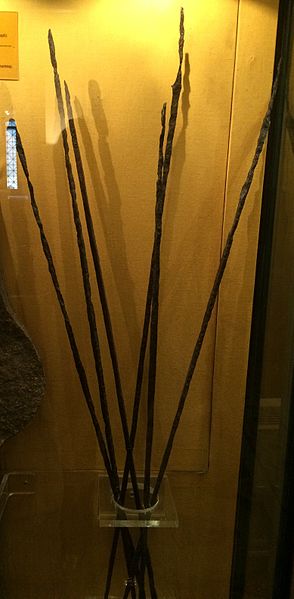The Heraion of Argos is an ancient temple in Argos, Greece. It was part of the greatest sanctuary in the Argolid, dedicated to Hera, whose epithet "Argive Hera" appears in Homer's works. Hera herself claims to be the protector of Argos in Iliad IV, 50–52): "The three towns I love best are Argos, Sparta and Mycenae of the broad streets". The memory was preserved at Argos of an archaic, aniconic pillar representation of the Great Goddess. The site, which might mark the introduction of the cult of Hera in mainland Greece, lies northeast of Argos between the archaeological sites of Mycenae and Midea, two important Mycenaean cities. The traveller Pausanias, visiting the site in the 2nd century CE, referred to the area as Prosymna (Προσύμνη).
Heraion of Argos, reconstruction on a 1902 painting
View from the Heraion of Argos into the Inachos plain.
Iron oboloi in the form of spits uncovered at Heraion, now displayed at the Numismatic Museum of Athens.
Remains of a stoa
Argos is a city and former municipality in Argolis, Peloponnese, Greece and is one of the oldest continuously inhabited cities in the world, and one of the oldest in Europe. It is the largest city in Argolis and a major center in the same prefecture, having nearly twice the population of the prefectural capital, Nafplio.
Panoramic view of Argos
Triobol of Argos, struck c. 270–250 BC. Obv.: forepart of a wolf, alluding to Apollo Lykeios, the patron-god of the city; rev.: large A (for Argos) within an incuse square.
The Heraion of Argos
View of the ancient theatre







